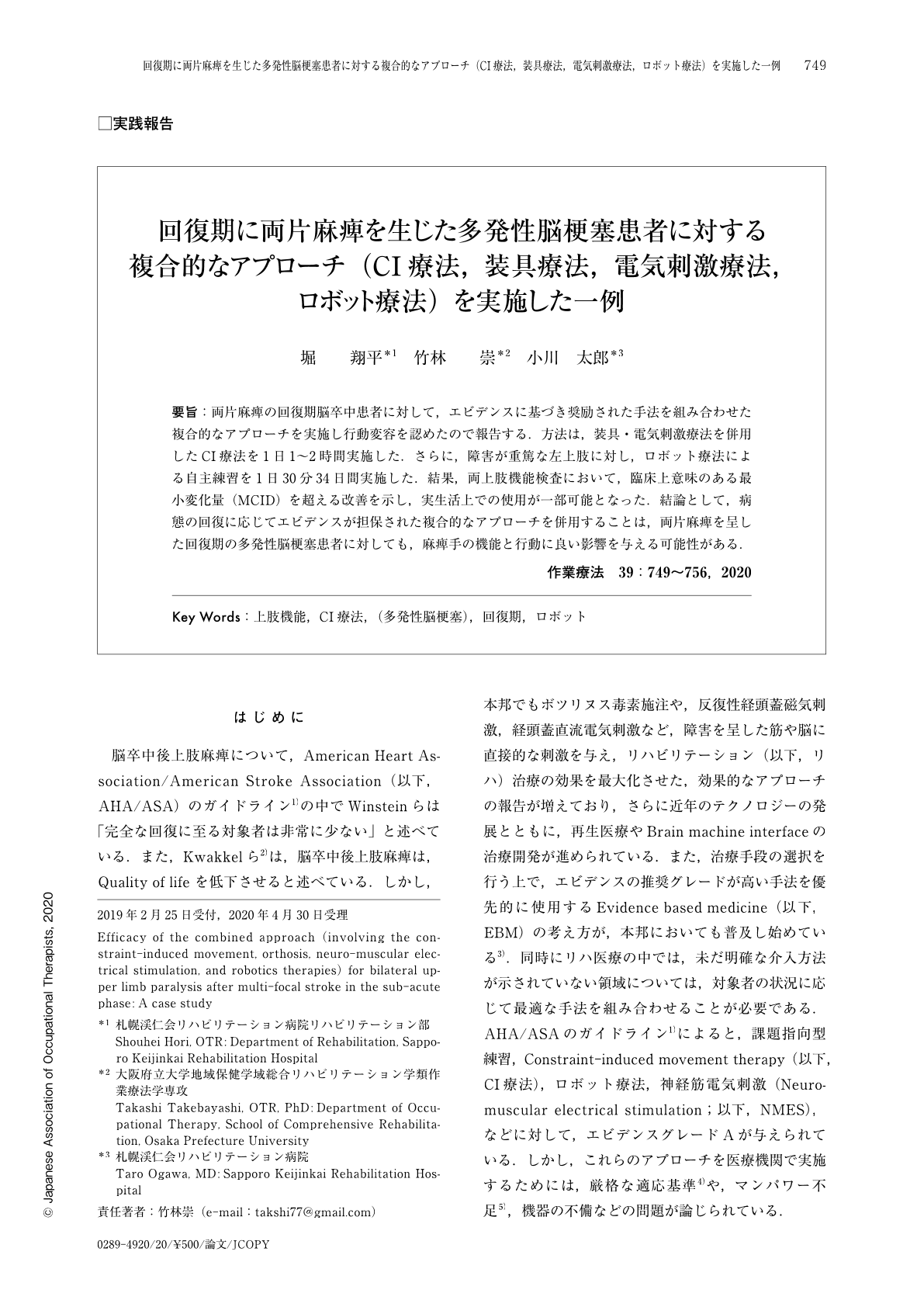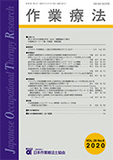Japanese
English
- 販売していません
- Abstract 文献概要
- 1ページ目 Look Inside
- 参考文献 Reference
- サイト内被引用 Cited by
要旨:両片麻痺の回復期脳卒中患者に対して,エビデンスに基づき奨励された手法を組み合わせた複合的なアプローチを実施し行動変容を認めたので報告する.方法は,装具・電気刺激療法を併用したCI療法を1日1〜2時間実施した.さらに,障害が重篤な左上肢に対し,ロボット療法による自主練習を1日30分34日間実施した.結果,両上肢機能検査において,臨床上意味のある最小変化量(MCID)を超える改善を示し,実生活上での使用が一部可能となった.結論として,病態の回復に応じてエビデンスが担保された複合的なアプローチを併用することは,両片麻痺を呈した回復期の多発性脳梗塞患者に対しても,麻痺手の機能と行動に良い影響を与える可能性がある.
Purpose: To illustrate the treatment of a sub-acute patient with bilateral upper-limb paresis using several approaches. Method: Constraint-induced movement therapy (CIMT) combined with the orthosis and neuro-muscular electrical stimulation therapy for one to two hours per day was used. In addition, to treat the more affected left upper-limb, robotic therapy was used as a self-training for 0.5 hours per day. These approaches were tailored to the improve the function of the upper-limb disorder for 34 days. Results: Several upper-limb outcomes of bilateral upper limb function improved beyond the minimal clinical important difference. Conclusion:Combining several evidence-based approaches of the stroke-induced hemiparetic arm might benefit sub-acute multi-focal stroke patients with bilateral upper-limb paresis.

Copyright © 2020, Japanese Association of Occupational Therapists. All rights reserved.


